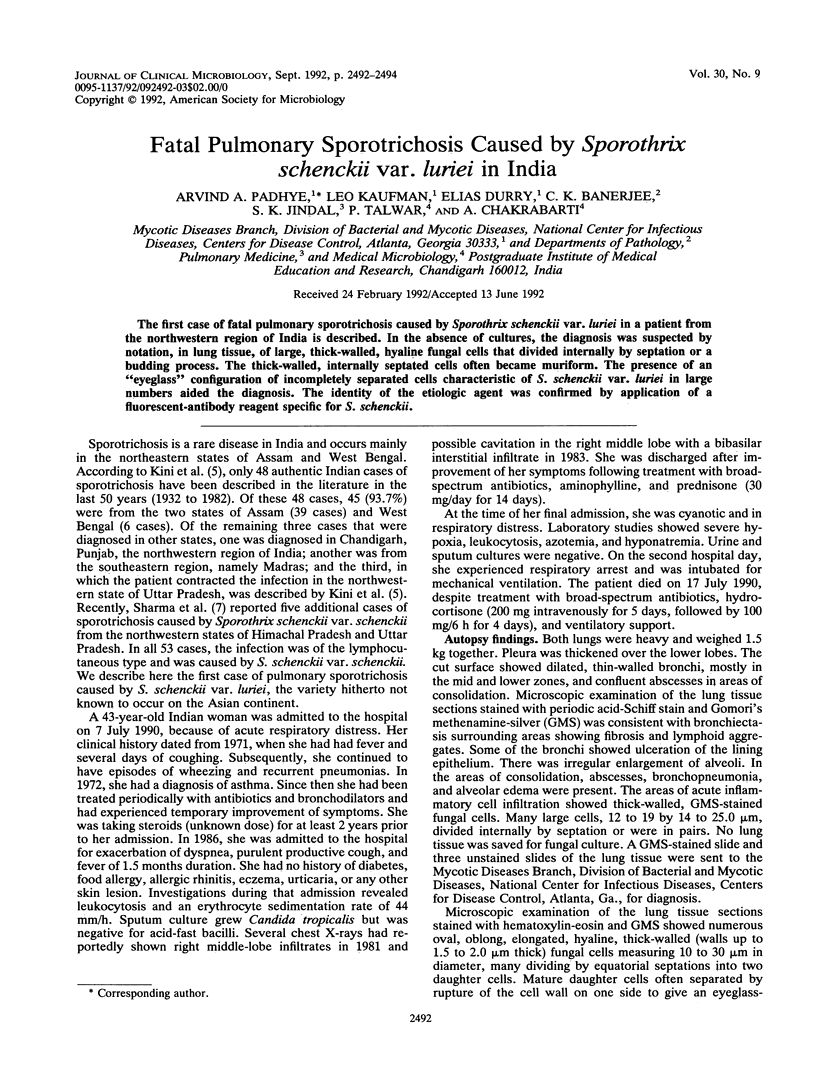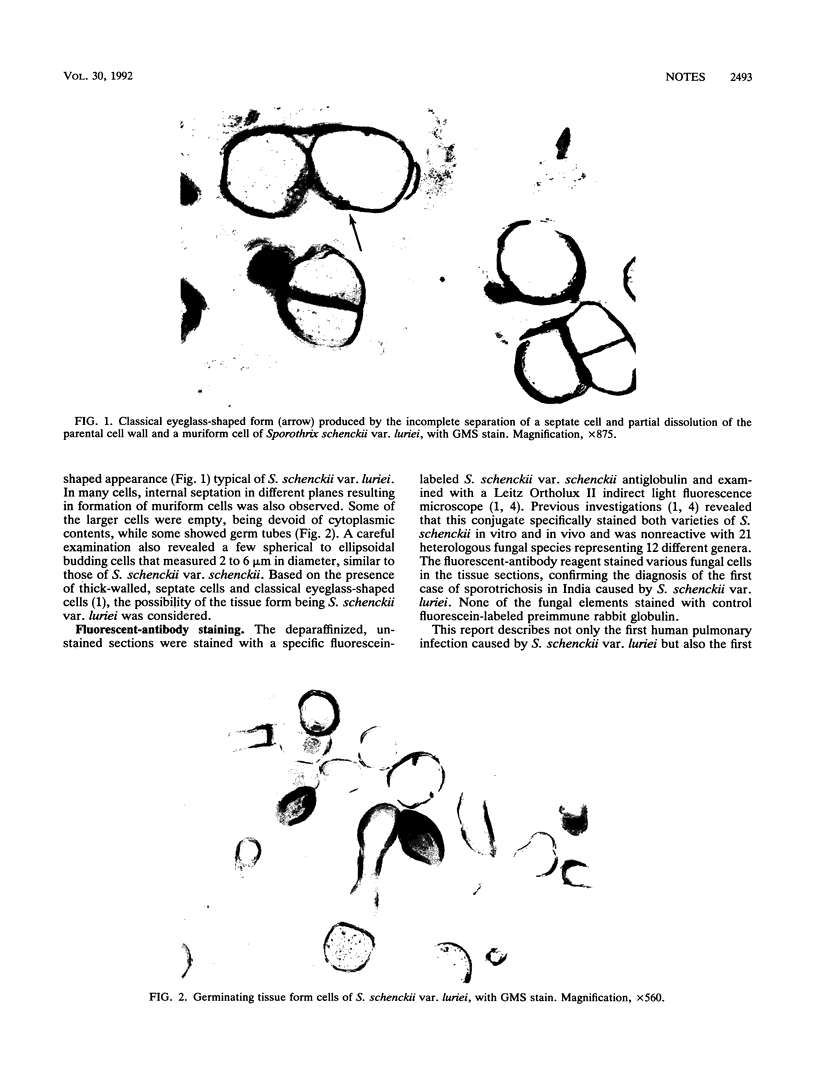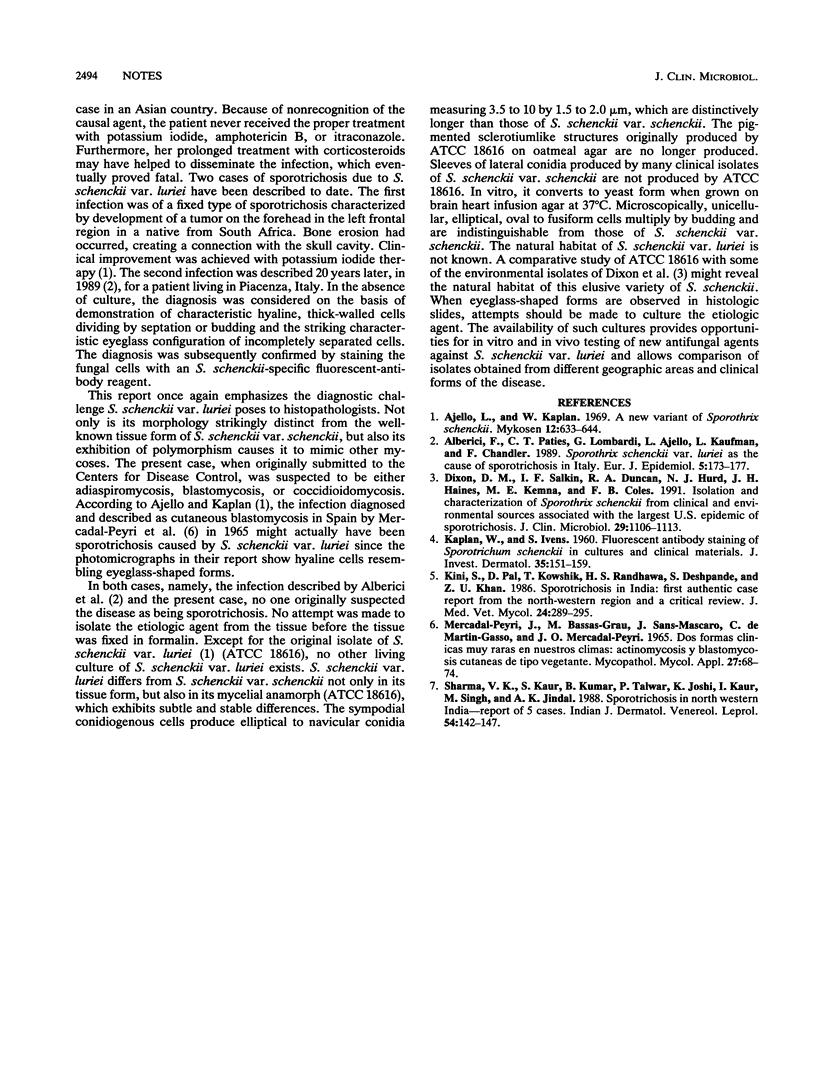Abstract
The first case of fatal pulmonary sporotrichosis caused by Sporothrix schenckii var. luriei in a patient from the northwestern region of India is described. In the absence of cultures, the diagnosis was suspected by notation, in lung tissue, of large, thick-walled, hyaline fungal cells that divided internally by septation or a budding process. The thick-walled, internally septated cells often became muriform. The presence of an "eyeglass" configuration of incompletely separated cells characteristic of S. schenckii var. luriei in large numbers aided the diagnosis. The identity of the etiologic agent was confirmed by application of a fluorescent-antibody reagent specific for S. schenckii.
Full text
PDF


Images in this article
Selected References
These references are in PubMed. This may not be the complete list of references from this article.
- Ajello L., Kaplan W. A new variant of Sporothrix schenckii. Mykosen. 1969 Nov 1;12(11):633–644. doi: 10.1111/j.1439-0507.1969.tb03423.x. [DOI] [PubMed] [Google Scholar]
- Alberici F., Paties C. T., Lombardi G., Ajello L., Kaufman L., Chandler F. Sporothrix schenckii var luriei as the cause of sporotrichosis in Italy. Eur J Epidemiol. 1989 Jun;5(2):173–177. doi: 10.1007/BF00156825. [DOI] [PubMed] [Google Scholar]
- Dixon D. M., Salkin I. F., Duncan R. A., Hurd N. J., Haines J. H., Kemna M. E., Coles F. B. Isolation and characterization of Sporothrix schenckii from clinical and environmental sources associated with the largest U.S. epidemic of sporotrichosis. J Clin Microbiol. 1991 Jun;29(6):1106–1113. doi: 10.1128/jcm.29.6.1106-1113.1991. [DOI] [PMC free article] [PubMed] [Google Scholar]
- KAPLAN W., IVENS M. S. Fluorescent antibody staining of Sporotrichum schenckii in cultures and clinical materials. J Invest Dermatol. 1960 Sep;35:151–159. doi: 10.1038/jid.1960.99. [DOI] [PubMed] [Google Scholar]
- Kini S., Pal D., Kowshik T., Randhawa H. S., Deshpande S., Khan Z. U. Sporotrichosis in India: first authentic case report from the north-western region and a critical literature review. J Med Vet Mycol. 1986 Aug;24(4):289–295. doi: 10.1080/02681218680000441. [DOI] [PubMed] [Google Scholar]
- Mercadal-Peyrí J., Bassas-Grau M., Sans-Macaró J., De Martín-Gassó C., Mercadal-Peyrí J. O. Dos formas clínicas muy raras en nuestros climas: actinomicosis y blastomicosis cutáneas de tipo vegetante. Mycopathol Mycol Appl. 1965 Nov 1;27(1):68–74. doi: 10.1007/BF02132433. [DOI] [PubMed] [Google Scholar]




